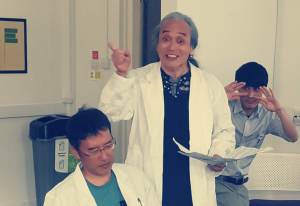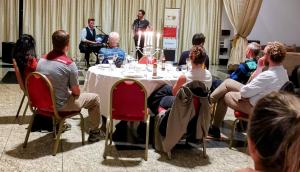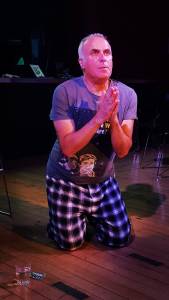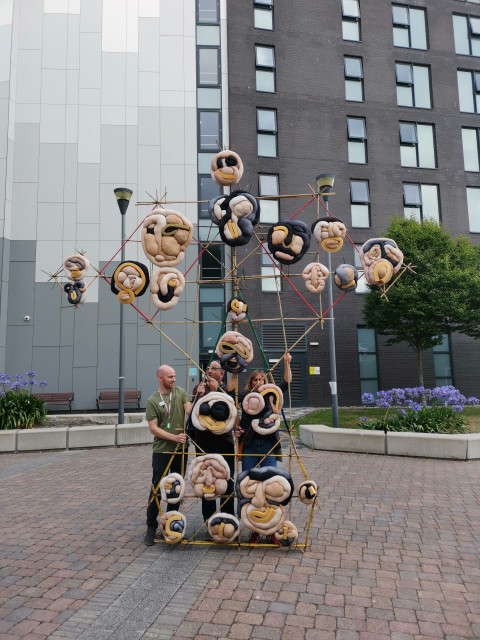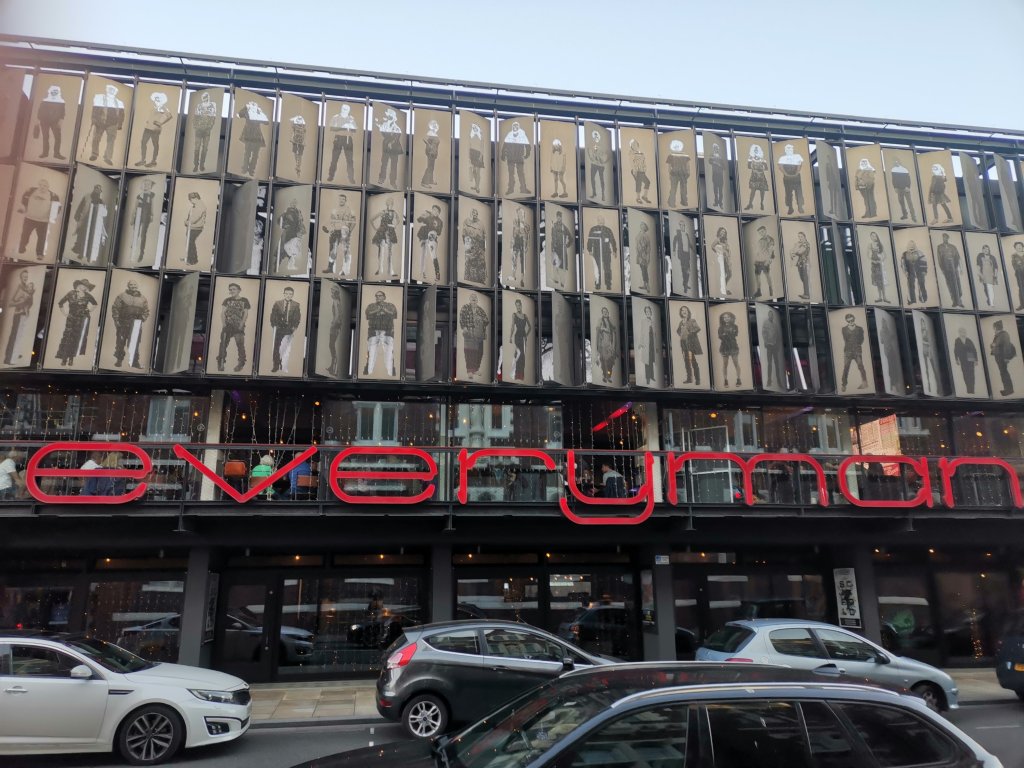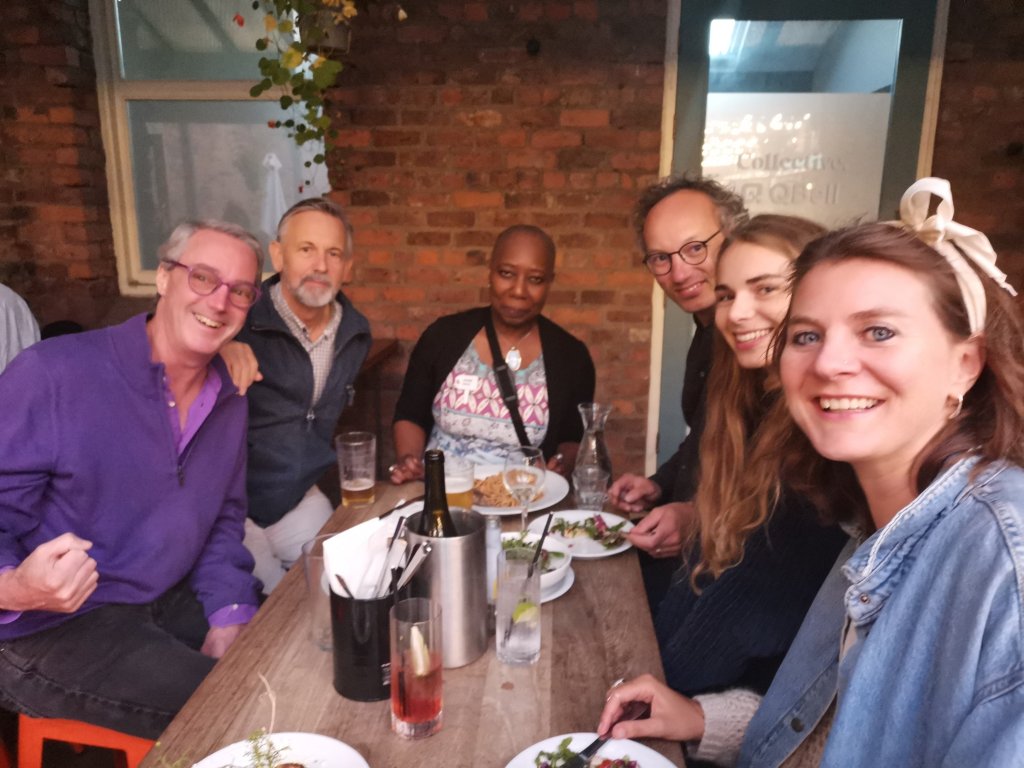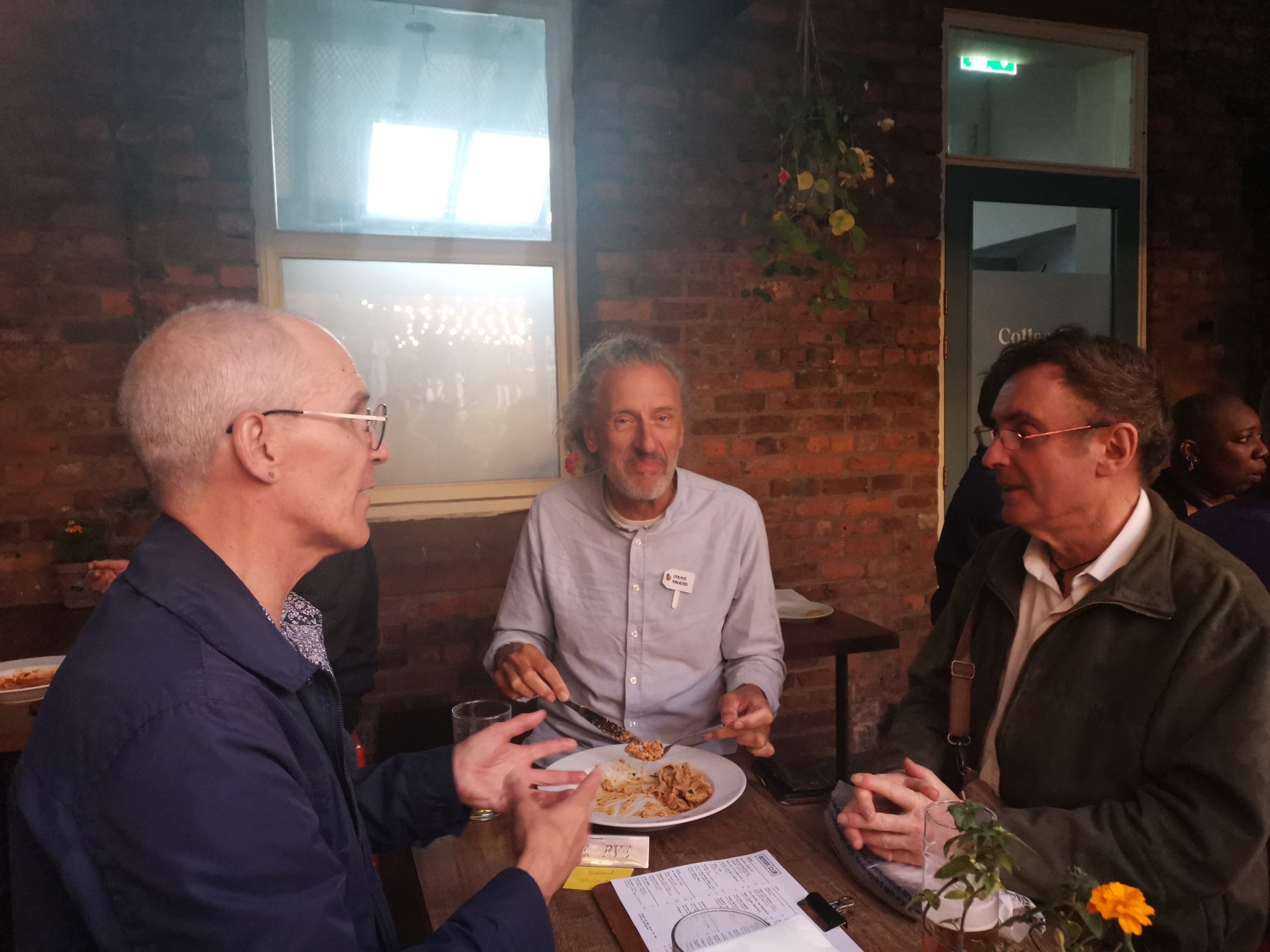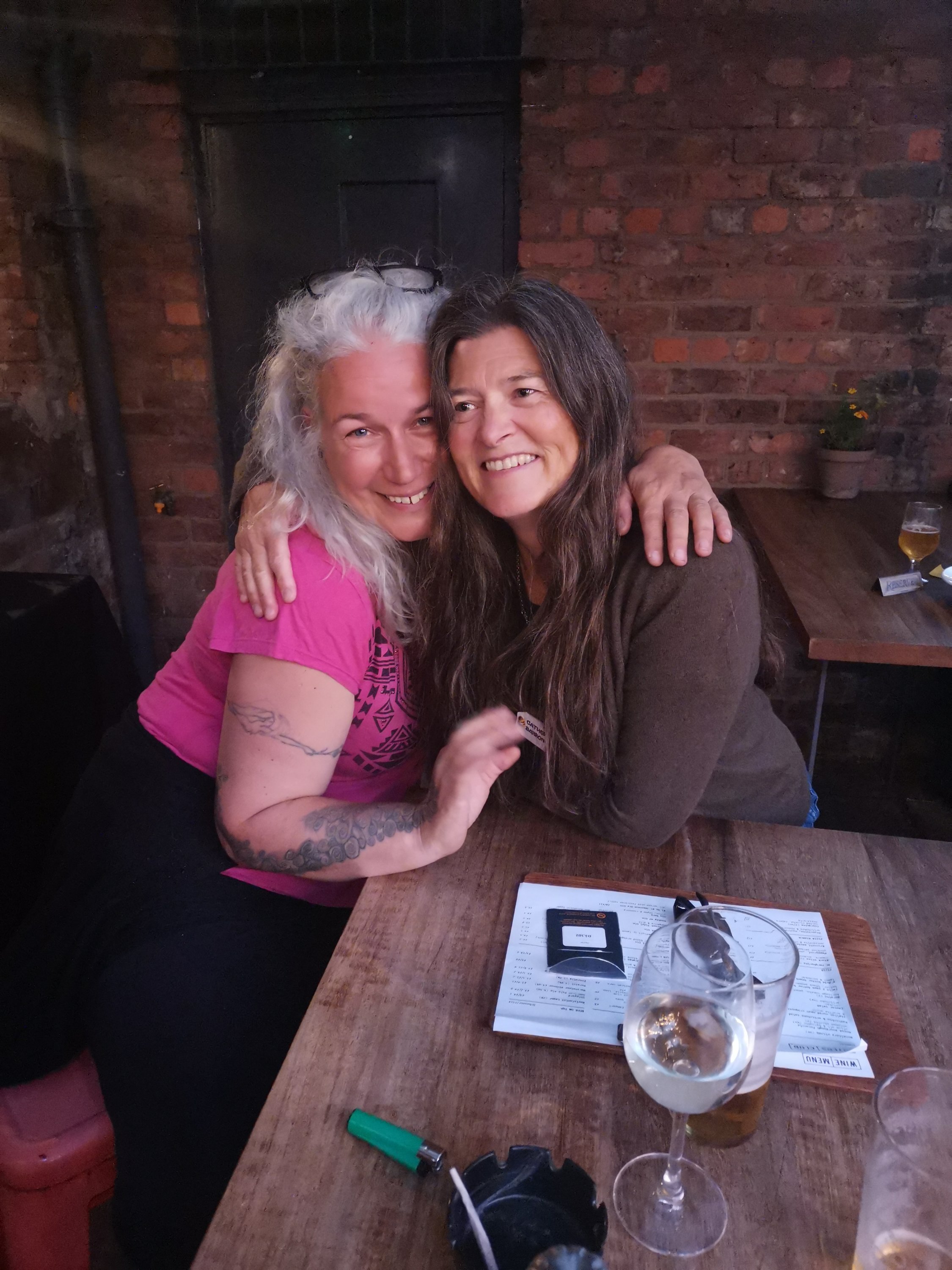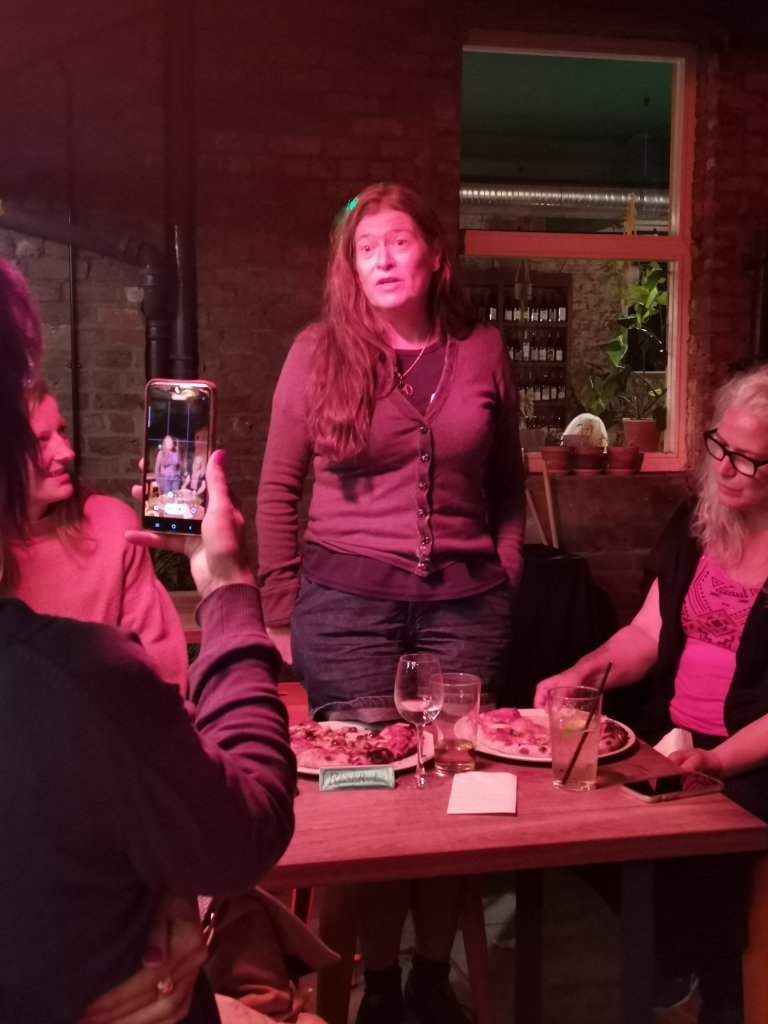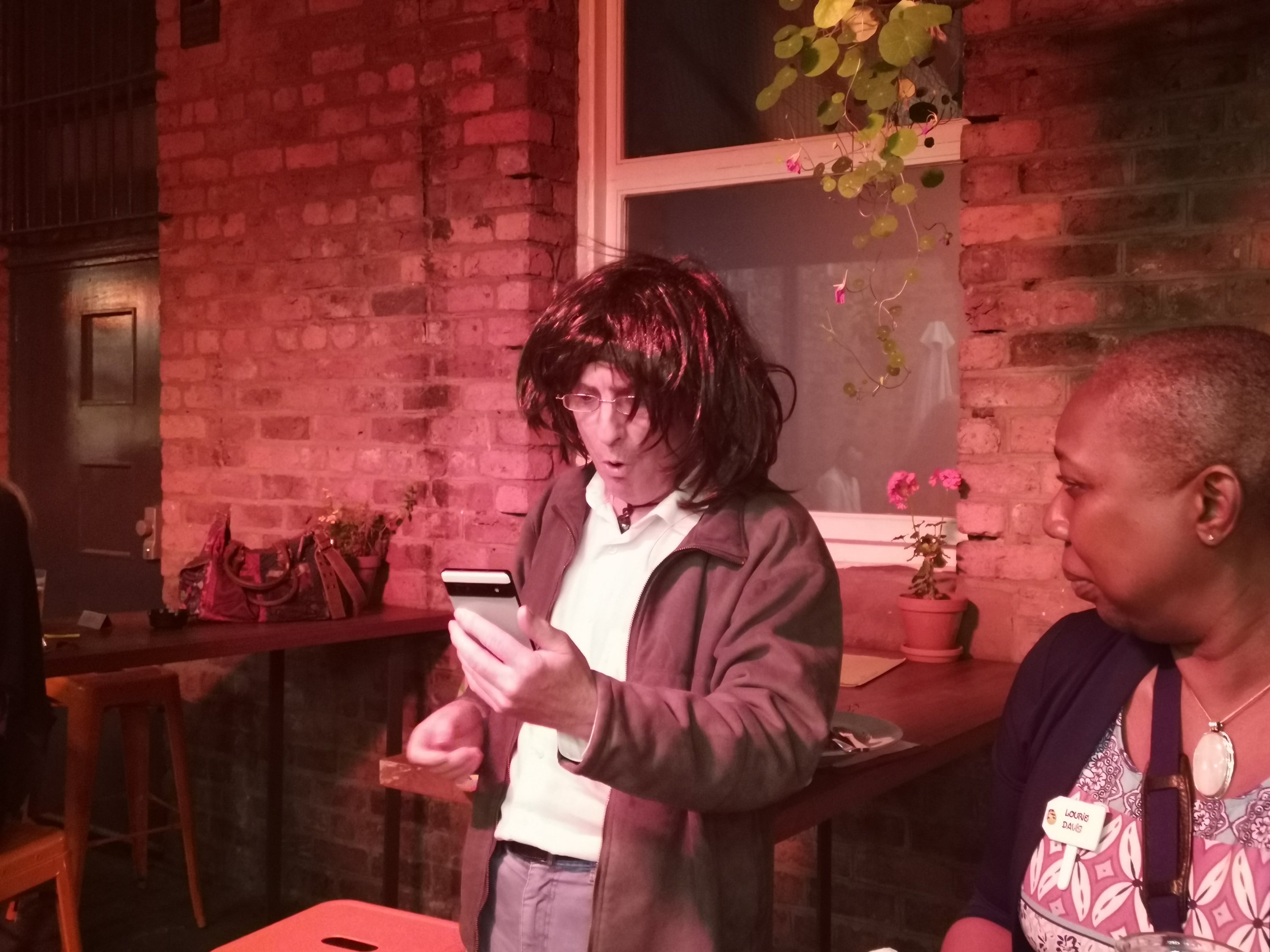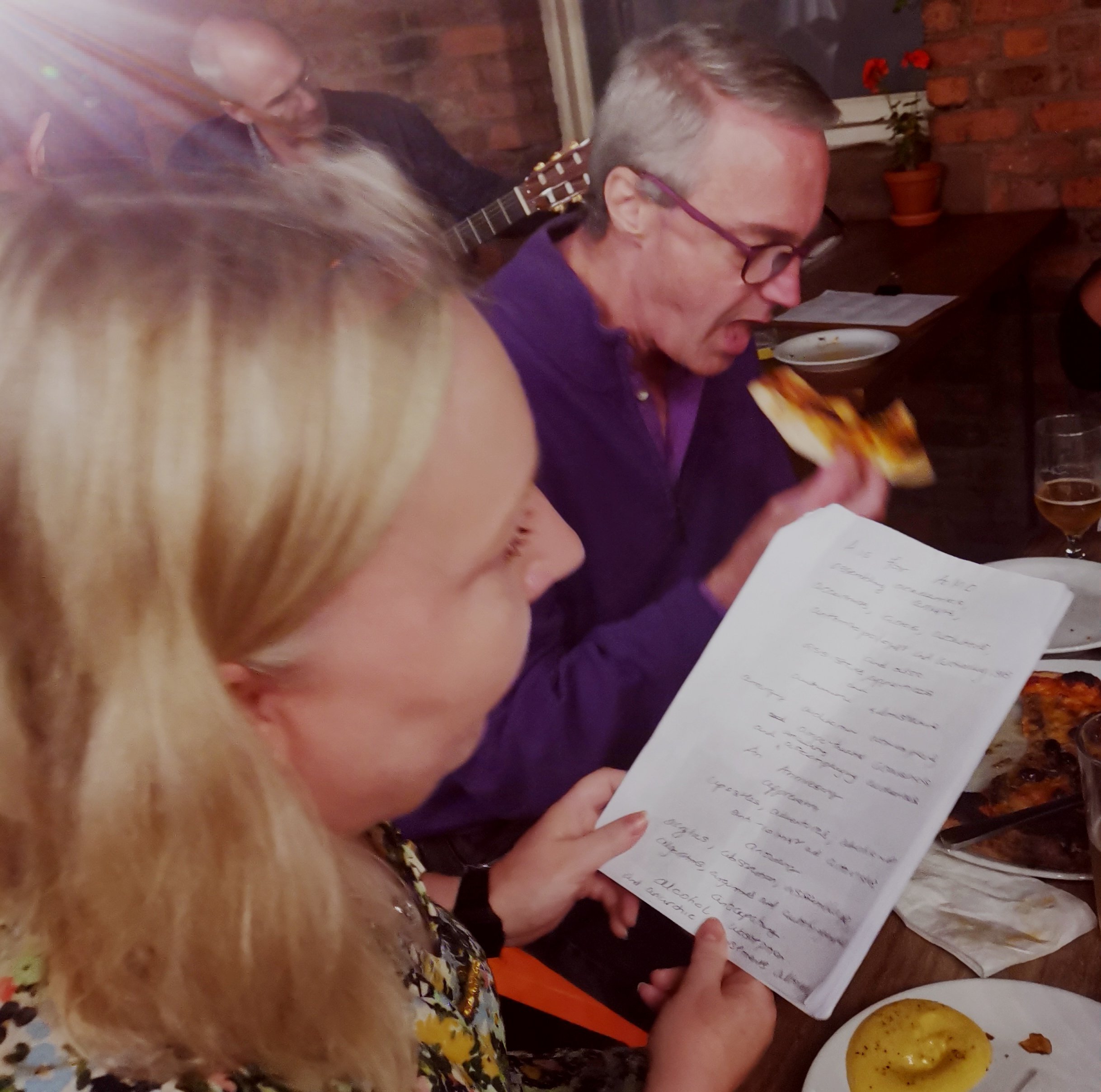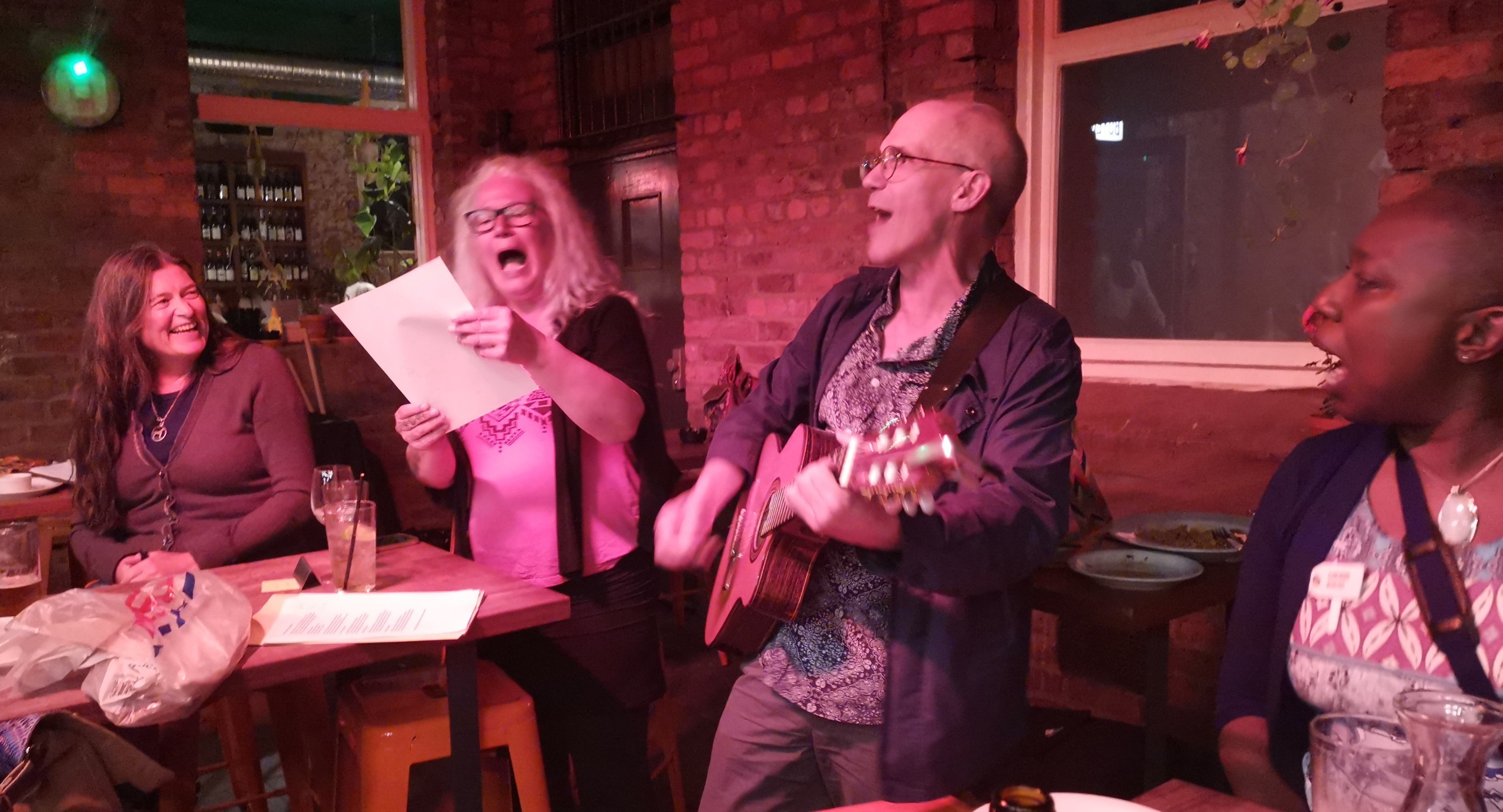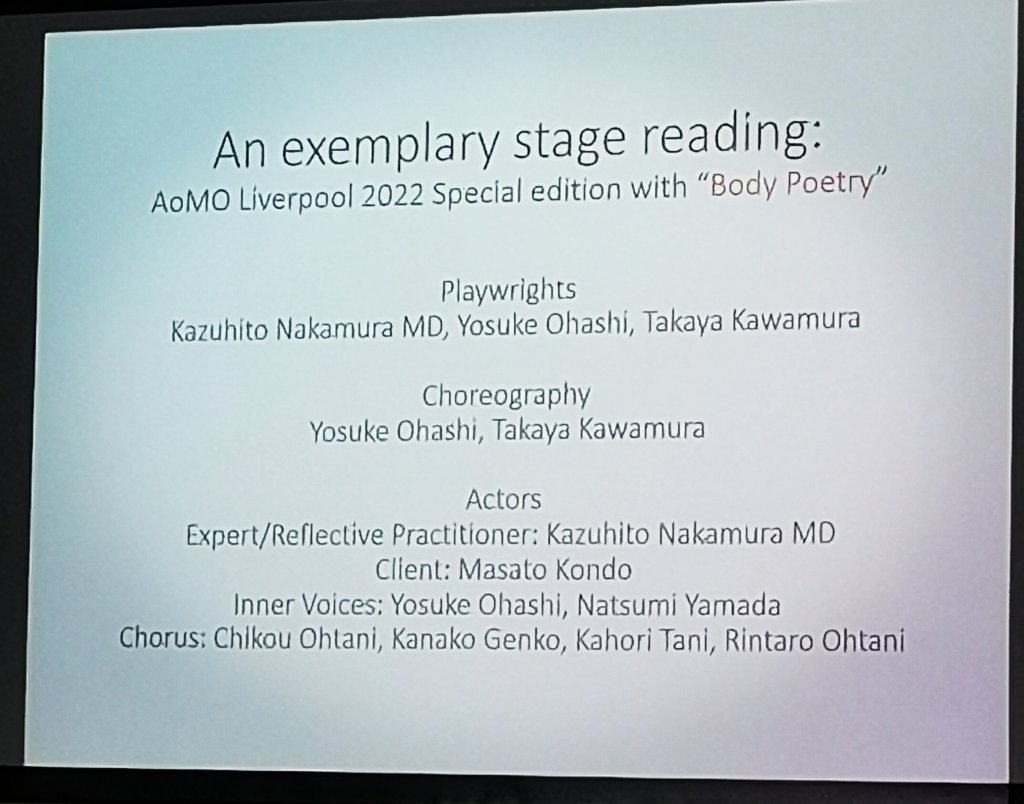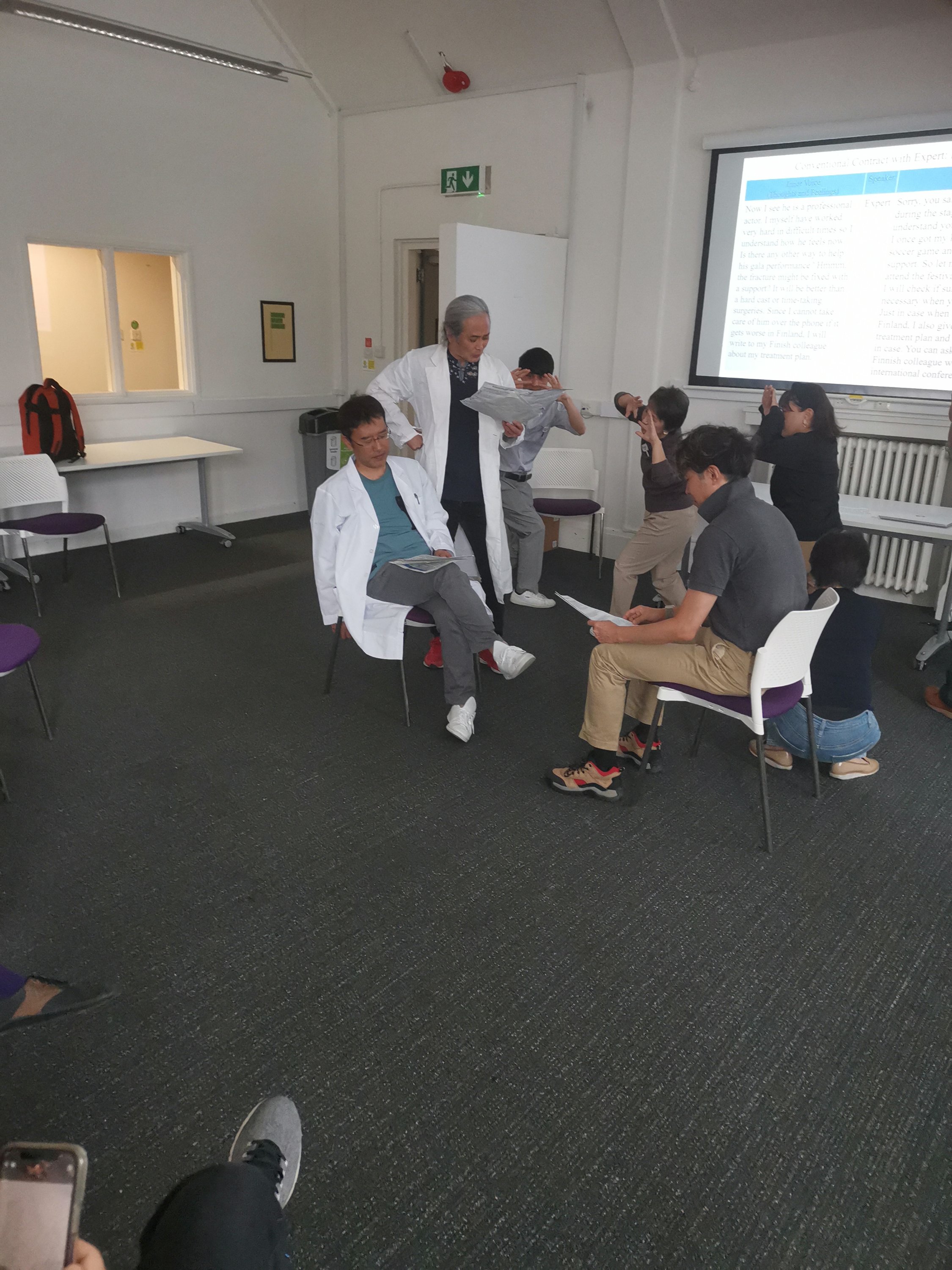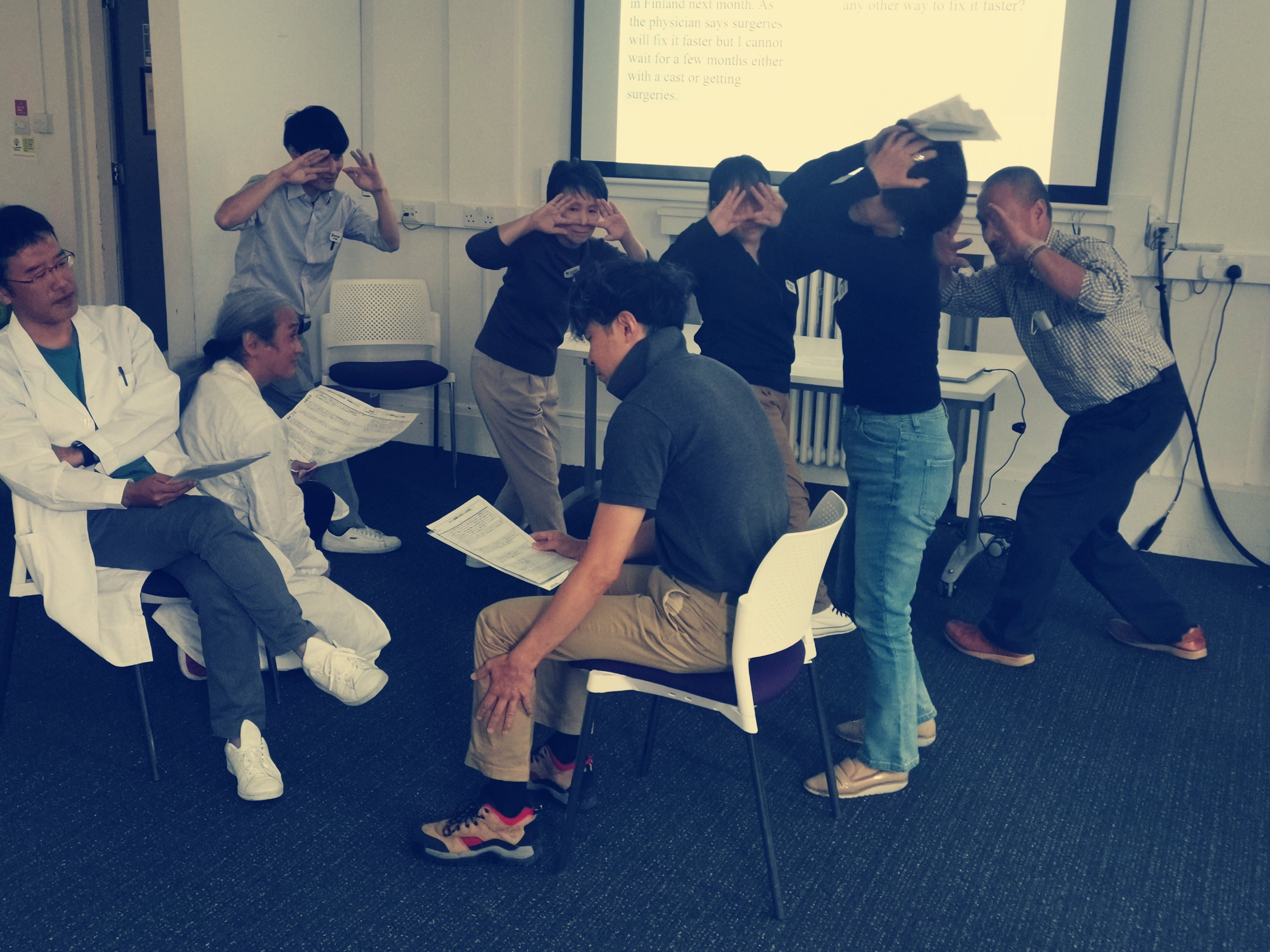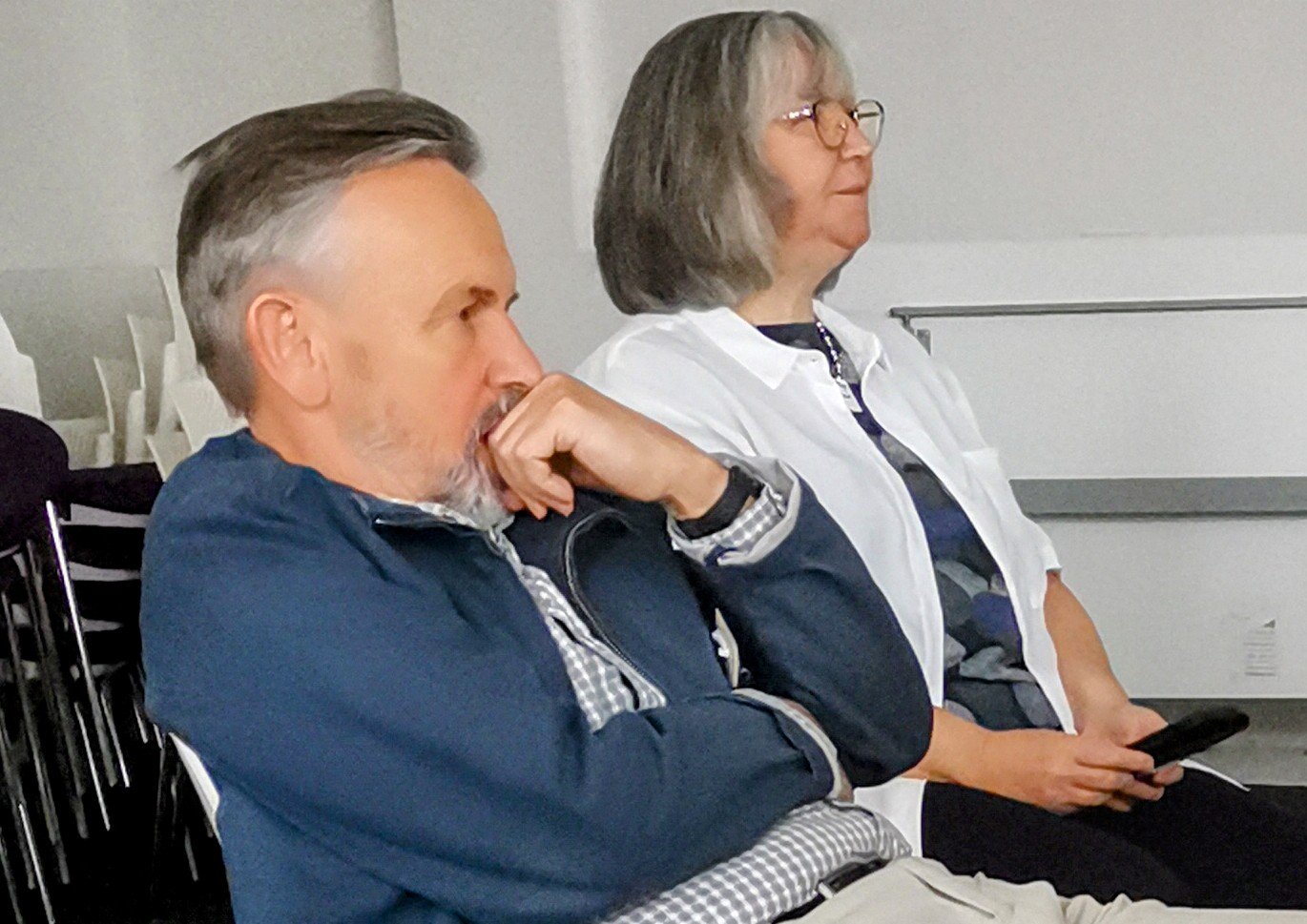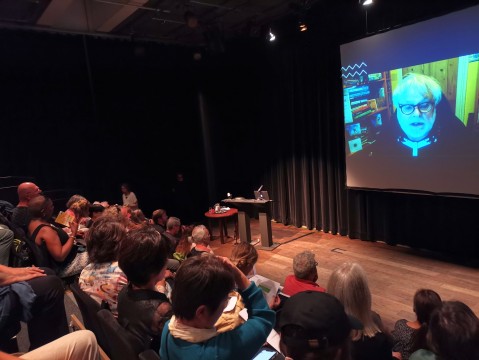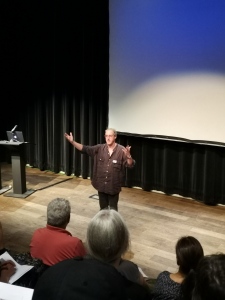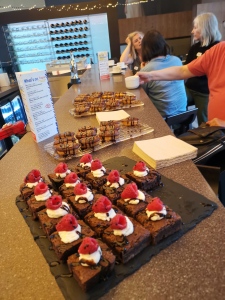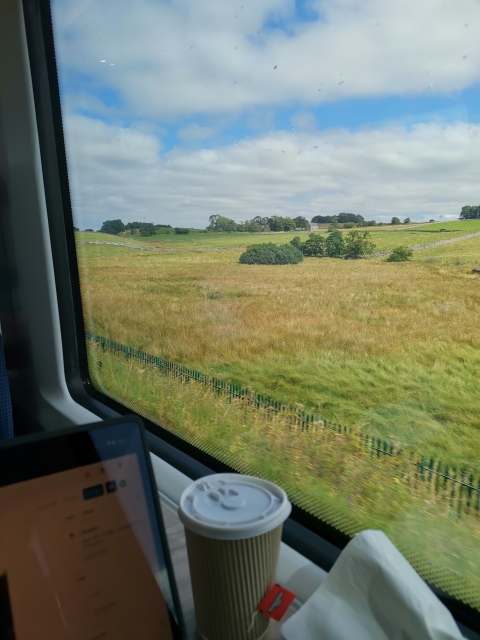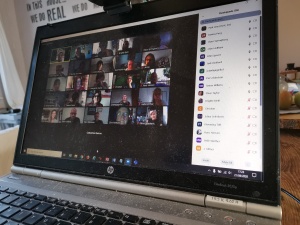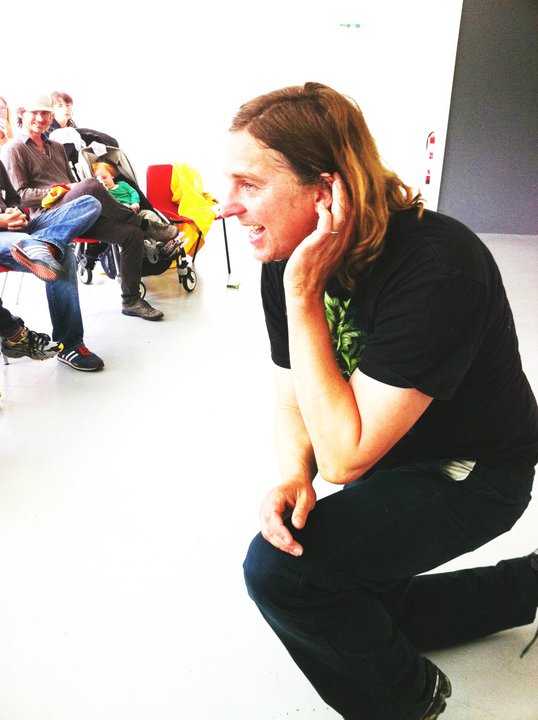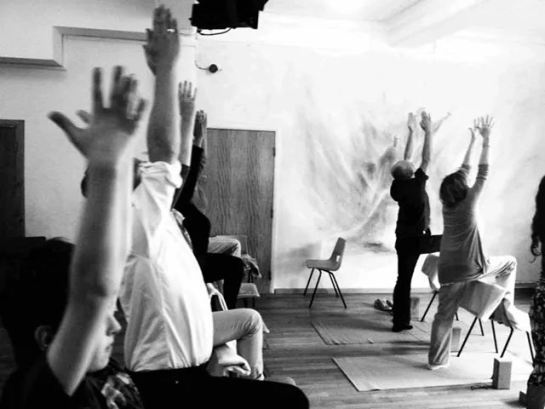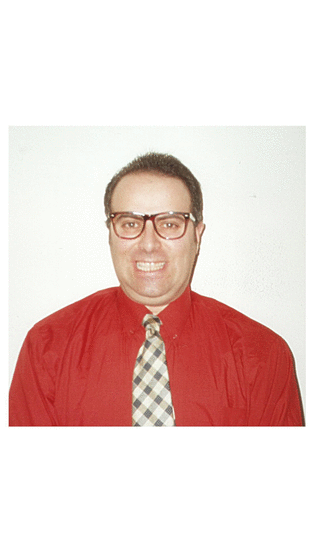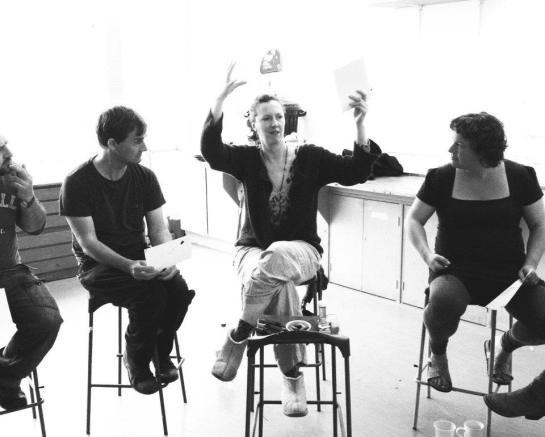
Is it possible that there are some principles of applied improvisation that we have overlooked? Have we cast these current model in stone and is there space to play with improvisation itself? Read on…
Over the last twenty years, I’ve been involved in improvisation in a range of different fields. Through Brighton’s Theatrelab, which was based at the Marlborough Theatre (as well as other spaces in Brighton) we explored improvisation as a group from new perspectives.
The Upstairs Theatre’s play-in-a-day concept looked at how we can quickly flow from conception to live public performance.
My work in the field of applied improvisation led to the creation of many new improvisation activities. In more recent years, my work with Rational Madness Theatre involved working with improvised film making.
Also working with Conscious Business UK and the Open Space community has allowed me to explore notions of presence and emergence.
It’s been through working in both the fields of theatre and organisational facilitation that I’ve come to identify some potential new principles of applied improvisation.
The first, which I’ve shared elsewhere is the principle of improvisation as resonance. Our next action becomes inspired by the “other”. We do not originate that action as a cognized decision, but find ourselves is a mode of inspired response, which emerges through a high degree of resonance with another person, group or situation. Group improvisation then becomes a sometimes edgy and frightening, sometimes exciting and enlivening process of mutual resonance. This can be found in some versions of improvised jazz.
Often there is an alternation between self-originated action, and other-inspired action. Improvisation flips between the two, but a state of “pure” improvisation occurs when we become a mindful “vessel” or “channel” for the flow, mediated by experienced resonance.
Resonance can become an alternative to status, where we find our position and place in a group or scene of flow, not through the taking and offering of status, but through a kind of magnetic attraction to different levels and qualities of resonance. Resonant (and also dissonant and assonant) are akin to musical states.Resonance can create harmonised action similar to high levels of Yes, and…) but often the flow can become creatively complex, lost or bewildered, before sometimes (and not always certainly) converging into a synergistic flow, where an emergent property may be delightful, breath taking or even genius. So, principle 1, is that improvisation arises out of resonance and also creates it.
The second principle sees improvisation as transtemporal. It moves away from clock time to time experiences not only in the present, not only as a “Now”, in-the-moment state, but a beyond-the-moment state. We can improvise by acting on “vision”, where a future picture or imagination inspires us into present action (we act on a dream, either individually or shared in a group). We can also improvise by using history as improvisational raw material – we literally put what went “before” (behind us in time, in the past), “before us” (as something in the present and future to be worked with). We do not need to move on from the past when we improvise, we can move on “with the past”.
Here we treat the past-present-future timeline as sometimes simultaneous, as if the timeline has become spatial and we can walk (or even skip and dance) among it. We allow future vision, present reaction and proaction, and past wisdom and restlenessness, to all “play into” our improvisational state. Though this manifests in our emerging present (where we can act in time and space), we experience all as concurrent. The timeline becomes one line in more more elaborate dimension. I believe the improvisation is transtemporal, even though it may well manifest to our waking awareness in three dimensions. Then, in the improvisational state, our acts can seem to fly in, the appear out of nowhere – yes, like magic, or, at least, from mysterious sources.
Eureka moments abound in high flowing improvisation, and some of these are ideas born of genius than arise from playing with past, present and future ALL at the SAME TIME. So, principle 2 states that improvisation lies outside of timelines, its source is transtemporal. (This isn’t as crazy as it sounds, especially if you are interested in quantum physics!)
The implications for applied improvisers, if they wish to explore these principles in action, is that resonance can become a new way to explore community and connection, collaborative working and organisational integrity. The second principle takes us into largely new territory where history is seen as vital raw material for innovation and improvisation. Also we can start to see the process of creativity and improvisation as being less tied to time (especially futures thinking) and more processes that play into timelines but are also hinting at original action that can determine what manifests in time. This is, in my view, real “acting”.
I’d love to hear your thoughts on this… There are more principles, but here’s two I’ve been mostly enjoying exploring.
On resonance, I have experienced something that remains mostly wonderfully mysterious for me, though I have heard this reported by several improvisers in this more focused field of A.I. It is this: that resonance may indeed be experienced as an outcome of improvisation. Yet, concurrently, I have experienced it (as have others) as also an original cause of improvisation. Clumsily put, improvisation is an outcome of resonance! This also connects with experience of time, where an improvisation process somehow uncovers or unravels something in the future that is experienced as a resolution of a “seed of potential” located in in the timeline’s past.We then experience an action in the present as a quantum input to a past state that then reveals itself as a sort of creative conundrum or even a culmination. The past is not only the ground of a consequential future,but the future state also “plays into” history, even altering it. Yes, improvisation can be time travel, not by travelling THROUGH time, but by travelling WITH time, or even INTO time.
I believe that resonance is not only an experienced output but also a start point to improvisation that occurs in ways that allow past, present and future elements to converge on an archetype and sometimes on a point of singularity, manifesting as a transtemporal “riddle”. These riddles have been embodied in zen koans and are attempts to bridge the unbridegable border between a cause and effect, time-based world and a realm in which our physical laws of space-time simply don’t operate (or not in the same way). In improvisation this is when sudden moments of genius, or uninterrupted flow that can’t be explained in terms of cause and effect alone manifest as shiver-down-the-spine performance. And sometimes they leave us just delightfully bewildered.
And you so can practice it. But it has to be without expectation of outcome. And the improvisation has to be improvised. There is no facilitated process that isn’t part of the improvisation. You don’t seek resonance. You are sometimes surprised by it, and sometimes it is a process of recognition or RE-cognition, (knowing it again, because, in a way, you’ve always known it.) You’ve mentioned a few references. I’ll offer one or two of my own that capture for me, part of what lies here:
Alice in Wonderland by Lewis Carroll
Cosmicomics by Italo Calvino
Applied Improvisation, for sure, might be ready to dive into quantum improvisation,and also to finally move beyond the notion of “Presence” as its rather limiting underpinning concept.
And I’m well aware of the sheer impossibility of describing any of this very well in the Latinised Language of the west.
A poem might do it better. Or a piece of improvised jazz…
